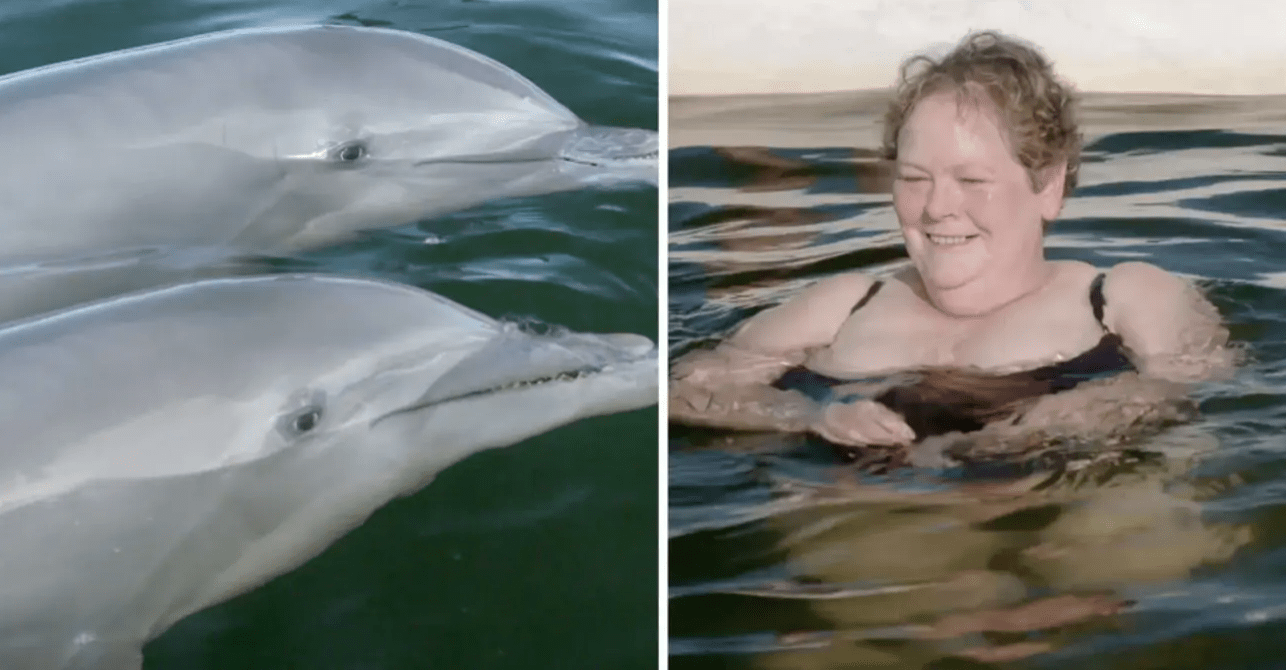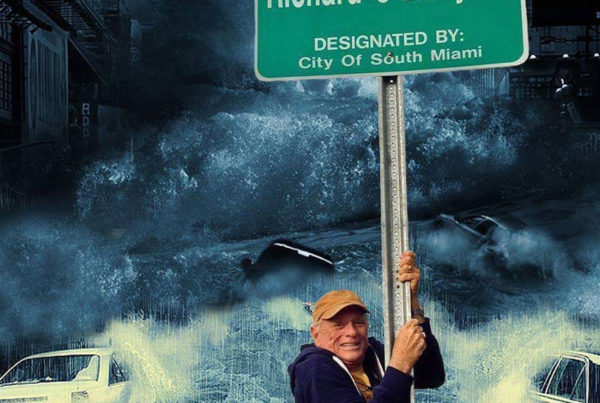Dolphin Freedom UK’s online call to action: The Chaser’s Road Trip: Trains, Brains and Automobiles.
Anne Hegerty, Mark Labbett and Shaun Wallace swim with captive dolphins at Dolphin Research Center in Florida aired on Thursday 21 January 2021 at 9pm on ITV.
Press Release
ITV’s “John Bishop’s Great Whale Rescue” helped to raise awareness for cetaceans captivity, but in stark comparison ‘The Chaser’s Road Trip: Trains, Brains and Automobiles’ used a captive facility with trained dolphins, taught to perform tricks rather than choosing to study dolphins in their home, the ocean. Performing circus clowns can not show the intelligence of a wild dolphin.
Swimming with dolphins is not only outdated but unethical in today’s society.
Every single ticket purchased for a swim-with-dolphins program directly encourages the continuation of captive breeding programs.
In captivity, dolphins cannot swim, forage, and dive the way they were born to do in the ocean. They are not free to reproduce and raise their calves the way nature designed them. In captivity, they perform tricks to receive their meal rations of dead, frozen fish while their wild cousins are chasing fish through the ocean and eat whenever they please. Captive dolphins live in less than one per cent of their natural habitat.
- A life in captivity steals them of their right to freedom. `They cannot communicate, hunt, roam, mate, support, educate and play as they would in the wild with their pod.
- Captive dolphins cannot escape from human interaction in captivity. They suffer immeasurably from constant human interaction and are regularly receive medication to combat depression, distress and anxiety.
- Captive dolphins are constantly at risk of being injured by humans and other captive dolphins. Their delicate skin may get damaged from human fingernails, jewellery and continuous contact with humans.
- Captive dolphins are known to attack tourists in swim with dolphin activities. The attacks are covered up and settled financially by the dolphinaria companies.
We no longer have dolphinariums in the U.K, and although not illegal, there is neither the political will nor public desire to have cetaceans in captivity. Unfortunately, U.K tour companies still sell tickets to dolphinariums worldwide, so we, Dolphin Freedom U.K, actively campaign against it.
Dolphinariums around the world no matter what guise they present themselves help to keep the trade going. Dolphin Project’s Helene O’Barry states “Members of the global dolphinarium industry, if they wanted to, could stop the insane dolphin slaughter in Taiji, Japan. They don’t want to, as they don’t want to offend their friends and colleagues who participate in it. Dolphinariums are doing nothing to stop it, and that makes them as guilty as the hunters: they have the power to make a difference and choose to remain silent and passive. Dolphinariums in Taiji actively encourage and even participate in the killing of dolphins that are too old, too young, too blemished, or have the wrong gender. I’ve seen trainers help the hunters drag the dolphins ashore to be killed. The trainers are killers, too. They are part of a pathetic industry that doesn’t care, does nothing and even encourages the slaughter of dolphins.”
– Dolphin Freedom UK

January 27 2021
MANY THANKS TO CHRIS PACKHAM FOR USING HIS VOICE!
Chris Packham has blasted The Chasers’ controversial swim with dolphins as “unacceptable”. He also blasted the production company behind the show for putting Chasers Anne Hegerty, Shaun Wallace and Mark Labbett into a position of controversy.
He said: “It’s probably not at the forefront of their thinking that, that sort of thing might be seen as unacceptable. So I suppose if there’s any disappointment, it would come from the production companies because they should be on top of this and making sure that their presenters, their contributors are made aware of those issues, and then they’ve got a choice. The production companies are putting it out and they shouldn’t be asking their participants to do things which are going to get them into trouble, whether it’s speeding, you know, anything, which is now totally socially unacceptable.”



February 4 2021
Here we are again with numerous articles in today’s press (Mirror : The Sun : Metro : Express) and an interview on ITV’s ‘Good Morning Britain’ defending swimming with captive dolphins which ended with Ben Shepherd’s endorsement, “it looks like a great experience.” So, thanks to ITV, how many people will now think it’s OK to swim with captive dolphins!?
Focusing on two dolphins who were ‘rescued’?
What research centre lets you kiss, hug, ride and paint with dolphins?
It is profit making exploitation.- https://dolphins.org/programs
Dolphin Research Centre is a scam.Their history and lineage is rooted in cruel dolphin captures. They have also transferred dolphins to facilities in Europe such as Loro Parque. Dolphins are bred to keep their sea cages full. They have used A.I for breeding, one of which was Noel at Miami Seaquarium who is now deceased.
SeaWorld Connections
Atocha’s ‘father’ is Pacino from SeaWorld.
Cacica’s ‘father’ is Razzle from SeaWorld.
Diva’s ‘father’ is Gilly from SeaWorld.
Flagler’s ‘father’ is Stormy from Theater of the Sea.
Reese’s ‘father’ is Brisby from Six Flags.
Windley’s ‘father’ is Fathom from Sea World.

REFERENCE:
p25 – The Case Against Marine Mammals in Captivity
1. Some public display facilities actually market themselves as research organizations and gain non-profit tax status, although their primary 24 function is to provide entertainment and serve as tourist attractions. The Dolphin Research Center in the Florida Keys calls itself an education and research facility and in fiscal year 2016 it brought in US$7.1 million, US$4.9 million of which came from admissions fees and interactive programs with dolphins.132 Despite having an annual income that would rival some marine laboratories, the actual research conducted here has been minimal.
133. The Dolphin Research Center (see endnote 45) was established in 1984. For the first two decades of its operation, based on information found on the facility’s website (www.dolphins.org), the staff appear to have produced only three peer-reviewed journal papers and a book chapter (Nathanson, 1989; Nathanson and de Faria, 1993; Smith et al., 1995; Jaakkola et al., 2005). This is not an impressive output for a dedicated “research center” receiving an income of tens of millions of US dollars over that period. Another paper involved an experiment that was highly controversial—it deliberately exposed dolphins to toxic pollutants in the form of oil slicks (Geraci et al., 1983; Smith et al., 1983; St. Aubin et al., 1985). In 2010, there was a sudden increase in the number of studies produced by the Dolphin Research Center (perhaps not coincidentally, the same year Congress held a hearing on cetaceans kept in captivity; see endnote 13). Thirteen papers are listed for the period 2010–2017 (although two of these are short 1–2 page commentaries on other researchers’ works, rather than original research), which is still somewhat low for a “research center.”



